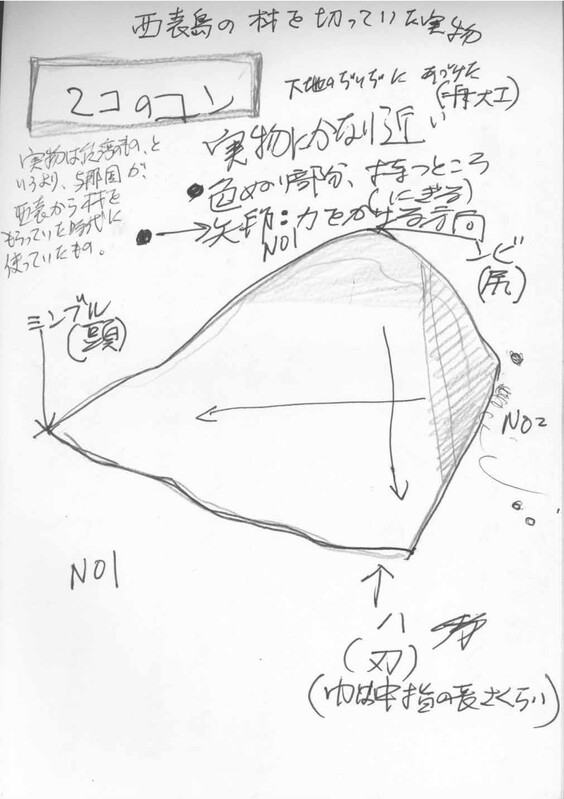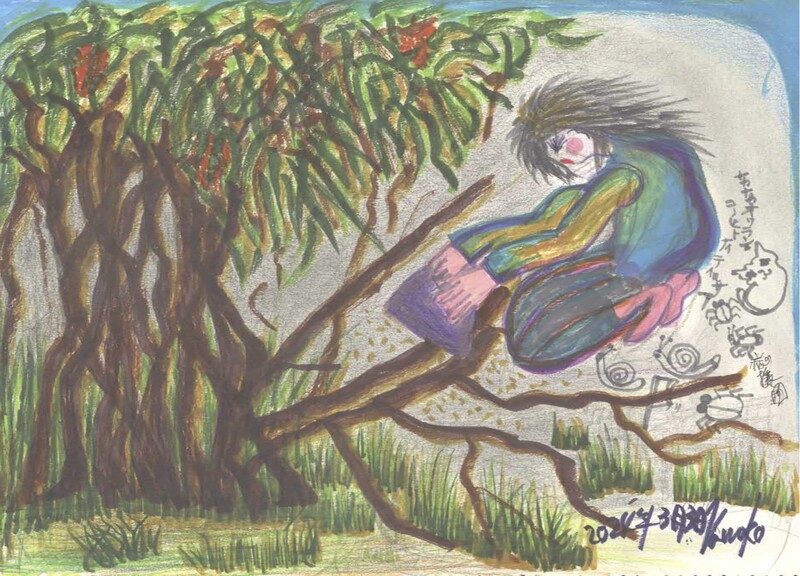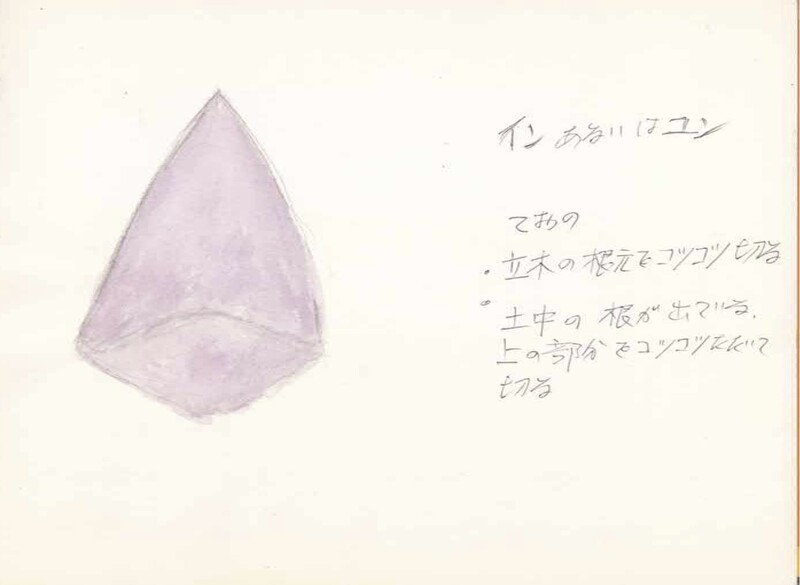![]()
Stone axes) used by contemporary Islanders of Yonaguni, Japan
2024/04/04
On Yonaguni Island, near Taiwan, the tradition of using stone tools was alive until recently.
Ms Wakaranko, who was born on Yonaguni Island in 1954, passed on many oral traditions and now lives in Hokkaido, still uses stone tools.
Among the stone tools she clearly remembers, were two stone axes, which were used without handles and were held with both hands.
They were called yun or in in Yonaguni. In is a dialect in Okinawa Island, and probably yun was older as appellation.
The drawing shown here was drawn by her. She used the stone axes for the task of removing aerial roots of Pandanus odoratissimus trees. Iron tools could not compete with the strength of the fibers of its roots. She was made to work for a whole summer, and in the picture she is murmuring with tears "This task is endless!" while her animal friends are encouraging her.
Originally, the tradition says, the stone axe illustrated here was used to cut timber, which was abundant on Iriomote Island, some 70 km to the east, and to build boats, and when she left the island, she left it with someone she trusted, Wakaranko said.
台湾に近い与那国島では、最近まで石器を使う伝統が生きていました。
1954年に与那国島に生まれ、たくさんの口頭伝承を受け継いで、現在は北海道に住んでいるMs Wakarankoは、現在も石器を使っています。
彼女がはっきり記憶している石器の中に、柄を付けずに両手で保持して使う石斧がふたつありました。
島では「ユン」または「イン」と呼んだそうです。「イン」は沖縄島の島言葉でもありますから、おそらく「ユン」がより古い与那国島での呼び方でしょう。
ここに示した絵は、彼女が描いたものです。彼女は、アダンの根を取り除くという作業のために、石斧を使いました。鉄の利器では、その根の繊維の強さ太刀打ちできなかったのでした。ひと夏も働かされて「ナカナカオワラン」と泣いている彼女に、ともだちである動物たちが応援団として寄り添っています。
この図の石斧は、もともとは、70キロほど東側にある西表島に豊富な材木を切って、舟を作ったりするときに用いたものと伝承されていて、島を出るときに、信頼できる人(船大工)に預けたとWakarankoさんは語っています。





